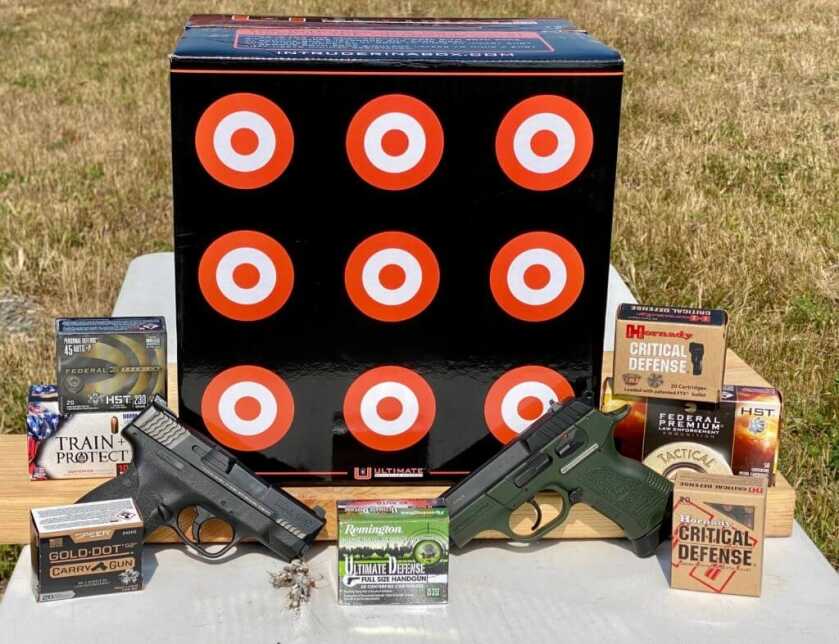
Estimated reading time: 10 minutes
If you are like millions of Americans, you own a handgun or handguns for home defense and maybe for concealed carry. There’s a very good chance your firearms are loaded with self-defense ammunition.
You may have wondered, though, how these rounds would actually perform in a worst-case scenario. So you jump online to order some of that ballistic gelatin you’ve read about–and discover it costs $300 and more for a single block, plus shipping! And a block is only suitable for a few rounds worth of shooting.
Table of contents
- The Concept of Intruder In a Box
- What It Is
- The Reasoning Behind This
- READ MORE: Break-In Before Breakfast: Georgia Homeowner Fatally Shoots Intruder
- The Gel Concept
- The Ballistic Gel Problem
- Shoot the Box – Intruder In A Box
- Testing Results For Intruder In A Box
- 9mm v/s 45 ACP
- Some Notes On The Bullets
- A Question I Had
- Conclusions
- SPECS: Intruder in a Box
What to do?
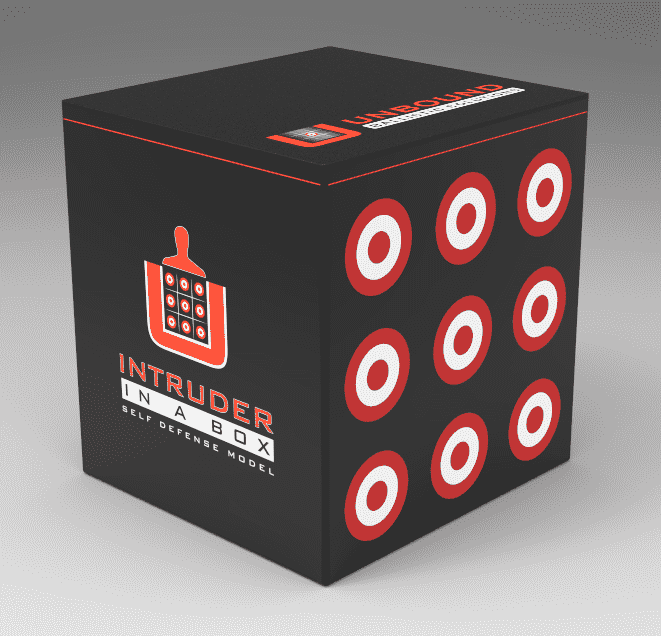
Intruder in a Box might be the answer, for at least two reasons.
The Concept of Intruder In a Box
First, the Intruder in a Box, made by Unbound Ballistic Solutions (UBS), Baton Rouge, Louisiana, sells for a reasonable $89.99, plus another $20.00 for shipping.
Second, unlike ballistic gel, Intruder in a Box is constructed to actually mimic the human body. You know, that thing we might have to shoot regardless of how much we’d hate to? In creating a facsimile of what an actual self-defense bullet might have to go into and through, the Intruder may well provide a better representation of what can and can not be expected of said bullet.
What It Is
The front of the Intruder box has nine bullseyes embossed onto the cardboard. Behind the cardboard is a tough but flexible layer of a rubbery material. Directly behind this is a much harder but thinner layer of a hard plastic-like material.
Next, the elongated rectangle behind each of these bullseyes holds a water-filled plastic container, followed by what looks like an air pillow used for packing—air to represent an expanded lung.
Then, more “bone” material and muscle/sternum-like flex material are at the very rear of the box.
As the photo below diagrams:
1 – Outer Cardboard = Skin
2 – Flex Layer = Muscle
3 – Harder Layer = Bone (Front Rib Cage)
4 and 5 — Fluid + Air Pillow = Lungs
6 – Hard Layer = Bone (Rear Rib Cage)
7 – Flex Layer = Muscle and Tissue
8 – Outer Cardboard = Skin.

The Reasoning Behind This
Intruder in a Box is the creation of Dave Giurintano, CEO of UBS, who holds a Master of Science Degree in Mechanical Engineering (MSME) and teaches Senior Design at Louisiana State University’s Department of Mechanical and Industrial Engineering, and Joey LaBlanc, MSME and Design and Development Engineer for UBS.
Both are hardcore shooting enthusiasts or “geeks” as they sometimes refer to themselves.
With their engineering education and shooting experiences, the pair formed the idea to build a system that more accurately reflected the muscles, sternum, and rib bones a defensive round would encounter on an actual center mass shot. They used published scientific material to replicate the mass, density, and flexibility of human tissue and bones to create a facsimile of the human torso chest cavity.
READ MORE: Break-In Before Breakfast: Georgia Homeowner Fatally Shoots Intruder
The Gel Concept
Ballistic gel is widely used by the F.B.I., other law enforcement agencies, and ammunition makers to test and design ammunition. For testing defensive ammunition, layers of clothing are often placed in front of the gel blocks. Frequently, bullets will be fired first through a layer of automotive glass or a piece of drywall to replicate conditions a law enforcement officer might encounter.
Generally, these tests try to determine bullet expansion, the size and depth of the wound channel, and how much weight the bullet may retain.
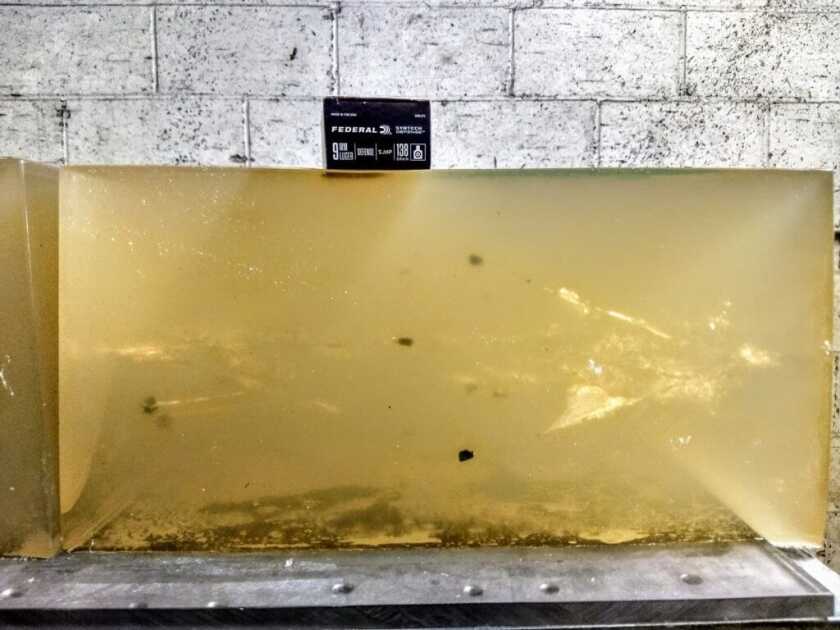
The Ballistic Gel Problem
Ballistic gel is built to reflect the overall, average density of the human body. That is, the density of the body’s bone, muscle, other tissue, and fluids averaged out.
But as Giurintano explained to me in an email, “We calibrated our materials in the box versus bone and muscle and used published material properties for internal organs. It is simple–ballistics gel is not a real replication of the organs and structure of the human body.”
Which means that gel presents a consistent resistance to a bullet. That’s one of the key reasons gel is used: the resistance is always the same allowing different bullets to be fired into it and to be then compared accordingly, with the gel providing a common medium.

However, tissue and muscle, human organs and bones, resist and flex at different levels when force is applied, including the force of a bullet. Gel does not account for the actual flexing and compression that occurs, for example, when a bullet passes through muscle to bone.
Shoot the Box – Intruder In A Box
I was sent a new Intruder in a Box, set it up on a table outdoors, and proceeded to shoot 9MM and 45 ACP self-defense rounds into the Box from five yards. The 9MMs were shot using a B6C semi-automatic pistol from SAR-USA , the 45’s with a Smith & Wesson M&P 45 Shield.
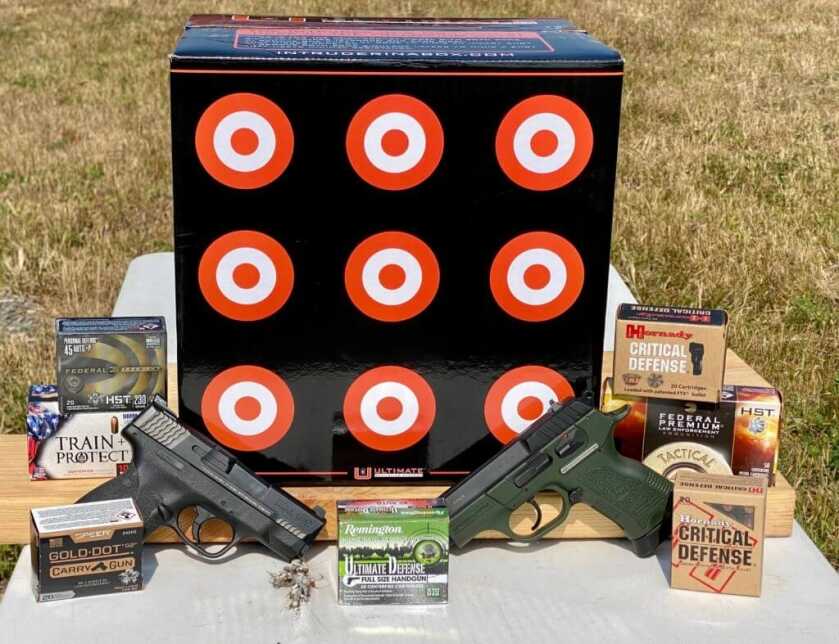
I shot the same brand 9MM rounds twice, one round apiece per bullseye, and one round per bullseye of 45 ACP into the remaining three bullseyes.
The only problem I had occurred during my first 45 ACP round. I aimed that round at the bottom lefthand bullseye but didn’t have my handgun lined up correctly, and the bullet tore out the side of the box. Oops!
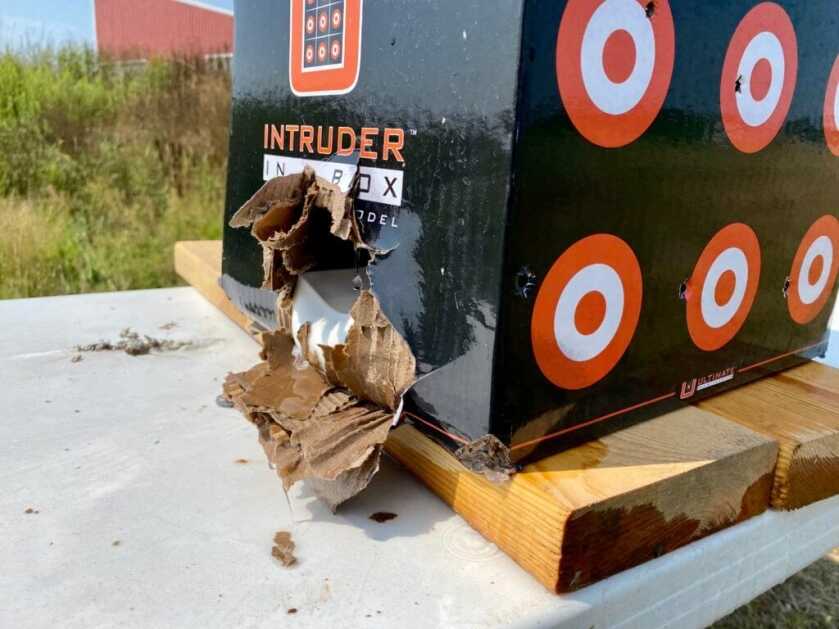
Testing Results For Intruder In A Box
With the shooting complete, I took apart the Intruder to examine the interior compartments and to retrieve the bullets.
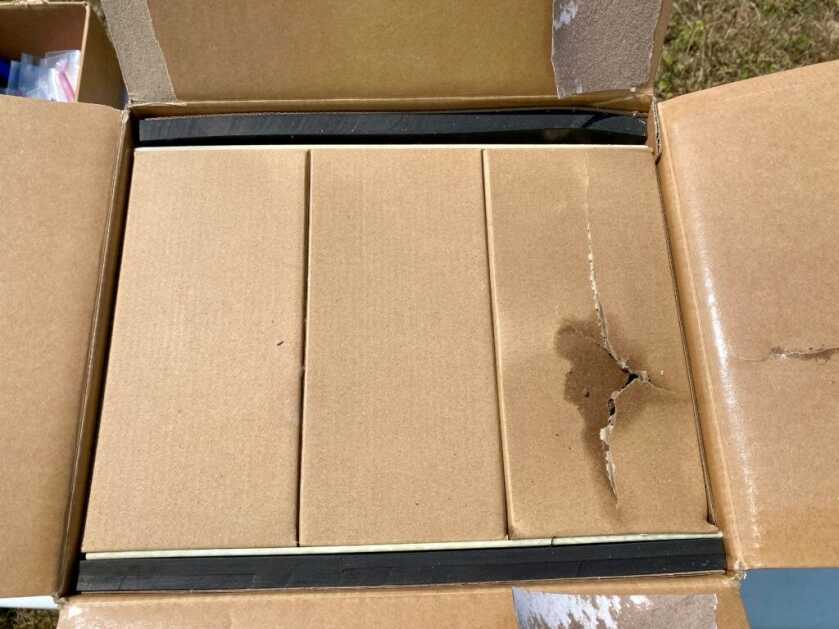
9mm v/s 45 ACP
I’ve done a number of my own gel tests with self-defense and hunting handgun rounds and watched ammunition company staff do many more of these tests. The bullets retrieved were always nicely mushroomed and retained nearly every grain of their weight.
The handgun hunting bullets I’ve dug out of deer and hogs? Not so pretty and usually with part or parts of the original bullets sheared off.
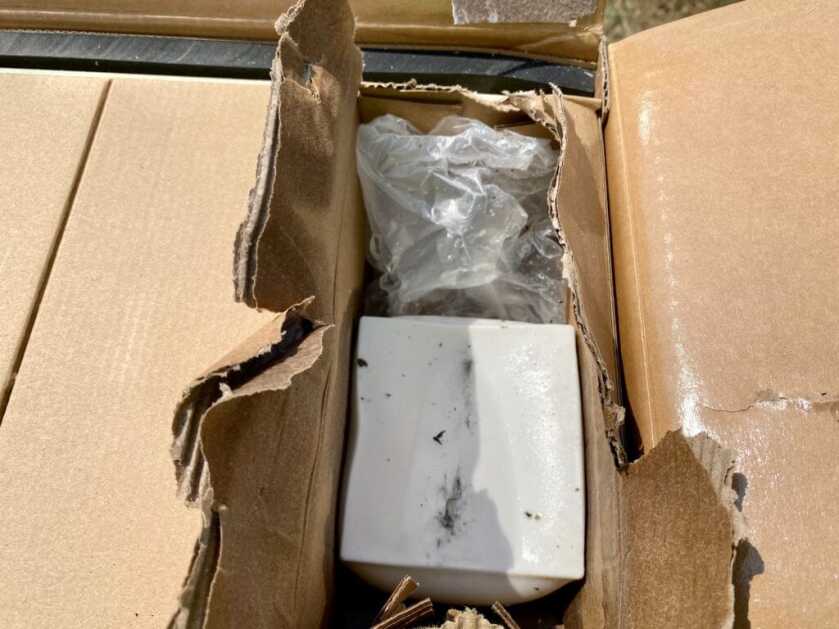
So, I wasn’t surprised that half the 9mm bullets shot into the Intruder were fairly mashed up, and didn’t display that near-perfect mushroom look after impacting the hard rubber-ish surface of the first black layer and the much harder “bone” layer.
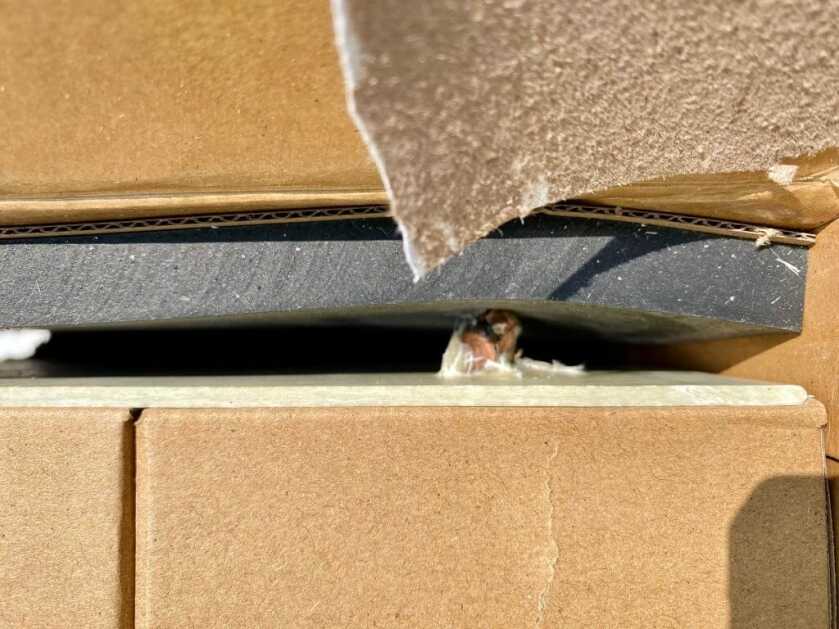
But I was a little shocked to see that some big-name 9mm self-defense bullets blew up once past these first two layers, jackets separating and petals designed to expand coming off the main body of the bullets.
The two 45 ACP’s bullets stayed intact, with minimal expansion.
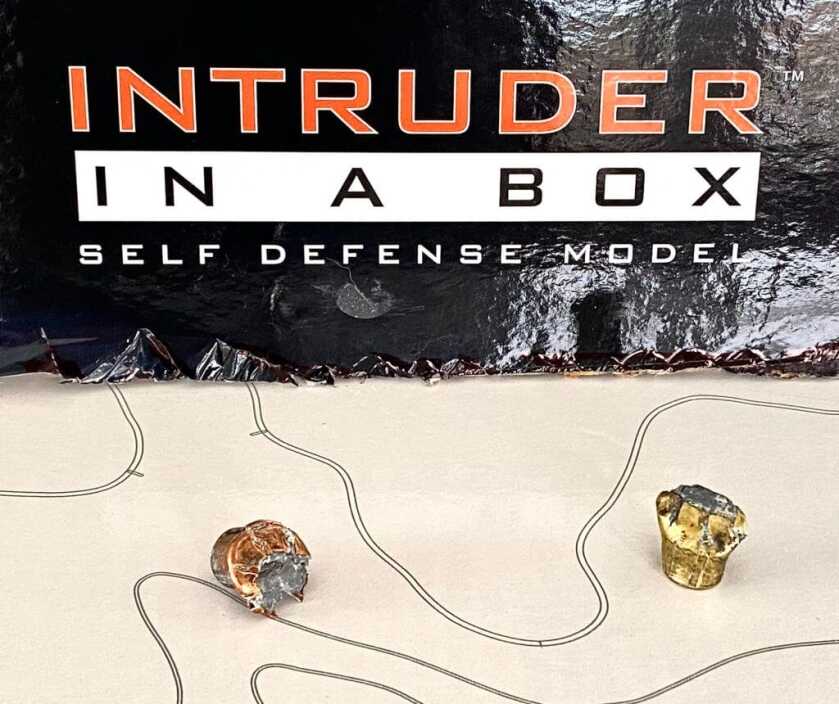
Some Notes On The Bullets
The 9mms of course, left the muzzle at 300 to 400 feet per second faster than the 45’s, and that extra speed and the lighter weight no doubt were factors in the 9mms coming apart.
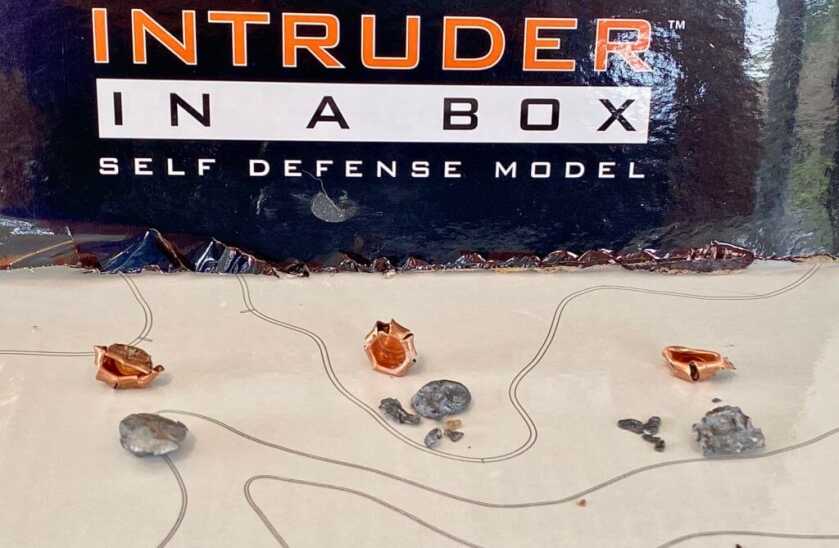
None of the bullets, 9mm or 45 ACP, went all the way through and behind the Intruder, which measures approximately 10.5 inches from front to back. Minus the bullets that came apart, the remaining bullets were stopped by the rear two layers. Some were stuck into the “bone” layer, and some made it past and were then held up in the flesh and muscle layer.
A Question I Had
Nine shots into the Intruder does not a study of self-defense bullets and their capabilities make. But it does bring up some interesting and rather pointed questions.
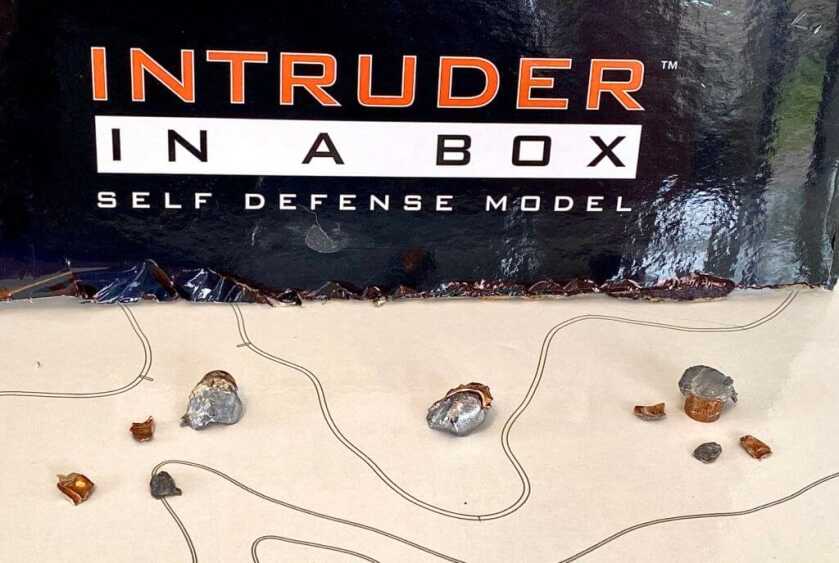
Such as, will the self-defense 9MM bullets that came apart in the Intruder come apart inside an actual intruder? And if they do come apart after contacting bone and tough muscle, how effective as threat stoppers are such rounds?
I don’t know the answers.
Conclusions
Based on my very limited use of the Intruder, it would seem that the 45 ACP self-defense round is the way to go. But that would need to be confirmed on other tests with the Intruder and some other way to see what these rounds do with actual bone and flesh. I’d also like to do gel testing with all the rounds I used for the Intruder test and compare and contrast results.
We carry and keep protection in our homes because real lives could be at stake. I see the Intruder in a Box as one step in us getting closer to knowing what a bullet will and won’t do in a real-world worst-case scenario, and I hope to do more such testing in the near future.
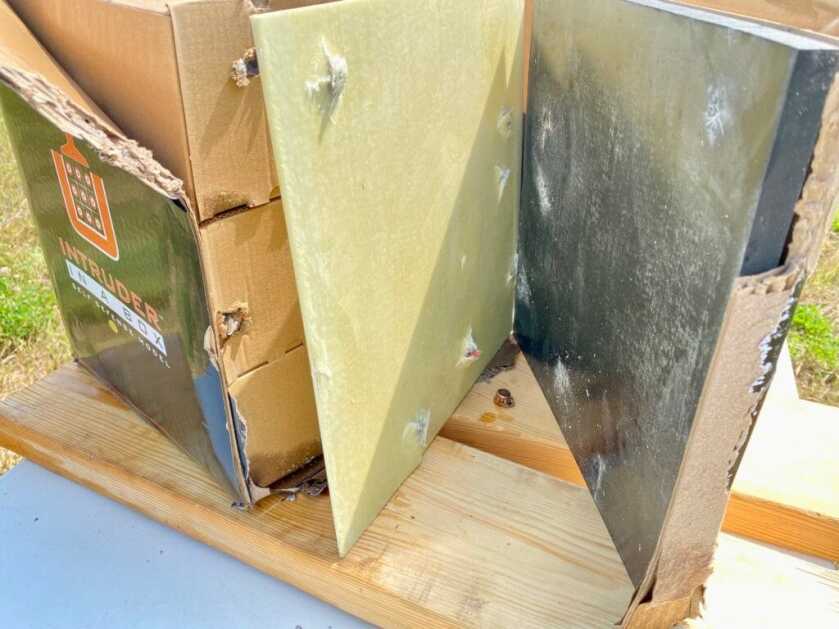
SPECS: Intruder in a Box
Dimensions: (L x W x H): 12.5 in x 10.5 in x 13.0 in
Weight: 26.0 Lbs.
NOTE: Intruder in a Box allows nine (9) test shots.
Cost: $89.99 + $20.00 shipping To Purchase: Intruder in a Box is only available for sale online at:
*** Buy and Sell on GunsAmerica! ***

It would seem that the real test of defensive ammunition is already available, albeit not easily accessible. Namely, the multitude of gunshot victims treated in hospital emergency rooms around the country. HIPPA aside simple photos of the retrieved bullet(s) or fragments of same with a non reveling note such as, “retrieved from 49 year old patient approximately 5′ 4″ weighting approximately 175 lbs.” Would provide sufficient date for a reasonable evaluation of the effectiveness of various self defense rounds. While not a scientific study, it would show what happens in the “real world”.
Which of these bullets were bonded if any? I am a retired Police firearms instructor and also purchased most ammunition. I always bought cartridges with bonded bullets for both handguns and patrol rifles except for some practice ammo.
I could have saved you $110.00 bucks by telling you that the 45 acp works- and it dosnt need expansion. I learned that 50 years ago with an Uncle Sugar issue 1911A1 and hard ball.A .451-.452 hole in anything human is gonna put them through a change.Now the pip squeak 9mm? It needs all the help it can get. Use a 9mm and die in place. Use a 45 and live.
I thought this argument was laid to rest years ago. Evidently, I was mistaken. Suggesting a 9mm is not lethal is irresponsible.
paul harell has a most realistic “meat target”. you should consider it, as it is the most reallistic of i have seen yet.
My first comment was not accepted, and I know not why.
I believe Paul Harrell’s “Meat Target” is far better analog than cardboard and rubber.
Paul Was great when it came to thinking differently but that’s not just cardboard and rubber. The rubber, fiberglass and fluids are all very specific mixtures. Those guys took biomechanical data to best mimic actual body parts. They didn’t just put in random stuff.
I would like see a 44mag 240gr sjfp with a max powder load tested….bet you will need 3 boxes stacked together!
Sorry, but the ballistic gel works more like a “body” whose composition is 60% water. The gel is a better analog, based on what I see above.
What a wonderful spinoff of Sr. Design at LSU! Way to go guys! Especially Dave Giurintano whom I am proud to personally know from our time at Carville USPHS Hospital.
I really liked the article on Intruder In A Box. My self defense rounds are expensive, so I haven’t done any testing on the efficacy of this particular design.
Thanks for all the hard work going into this.
I’d like to see this test run with Lehigh solids. They probably won’t deform, but then they are not designed to. I suspect some would make it all the way through. Also, Hornady Critical Duty are hotter than the Critical Defense, and I think tougher as well so as to permit going through car doors and windshields. Those should be tested as well.
Heard from a local Sheriff department that the hornady CD is being tossed. They had an OIS where a guy was shot at inches and one bullet made a small clean pass and the other didn’t deform and stayed inside.